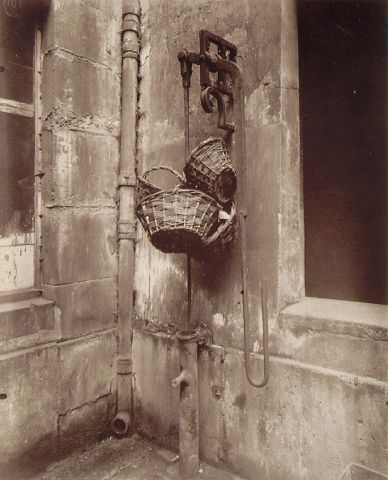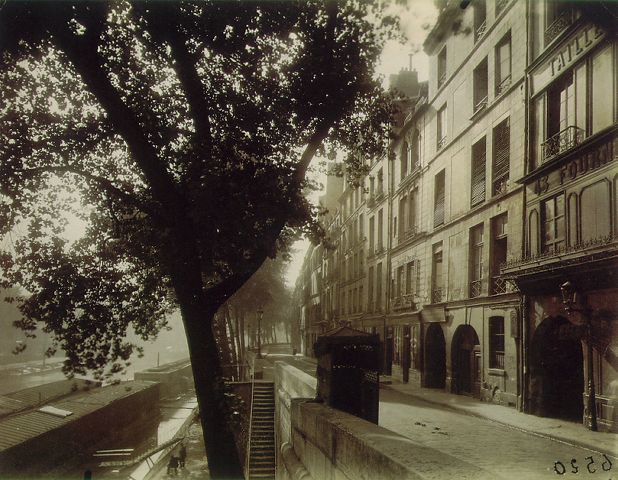|
December 13, 2003
Eugene Atget walked the streets of old Paris with his large glass plate camera before and after WW1:

Cour, 28 rue Bonaparte, 1910
This is not pictorialism as the poor cousin of painting. This photography was not concerned with photography as art, as it expressed a concern with the urban environment in the language of the picturesque.
He photographed Paris for 30 years. What caught his eye in the sprawling city were the vanishing remnants of the city's past as preserved in its architecture, neighborhood streets, storefront displays, shop signs, popular pastimes, and common outdoor occupations.
This urban wanderer had an eye for detail:

Fontaine du passage, 6 rue des Guillemites, 1911
His was a very different city to those of the planners and the branders.
Walter Benjamin's reaction to Atget photo's were that they were "empty ... empty ... empty." Benjamin missed the history in the culturalscape:

Quai d'Anjou, 6 a.m. 1924
It's a strange reading even with the decay of romanticism since Benjamin was so very sensitive to history, and the imprint of history on the culturalscape.
What we have with Atget's photos is a genuine culturescape; one that has yet to be ravished by an ahistorical utilitarian pseudo-progress, which brushes the past into the gutter as so much rubbish.
Atget reminds us that there is no beauty without historical remembrance.
|

I think you may be misinterpreting Benjamin.